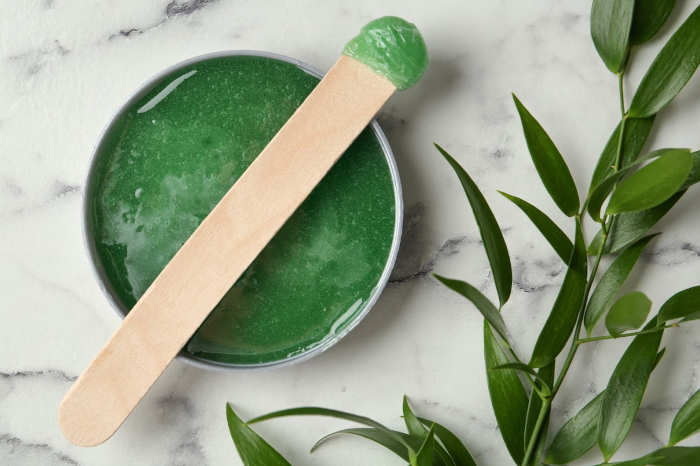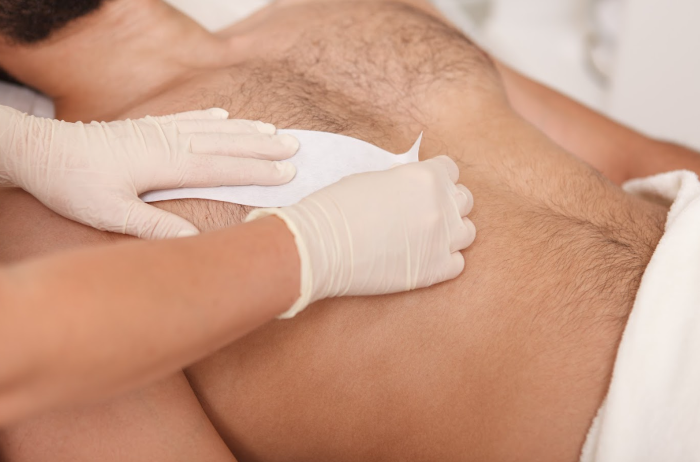
Most people who want to remove hair from their legs, arms, armpits, face, and bikini line prefer waxing. This procedure is ideal for plucking out hair, unlike shaving, which only cuts hair at the base. Waxing provides a longer-lasting solution, although hair will eventually grow back.
Waxing involves applying wax to areas where an individual wants to control hair growth. Unfortunately, waxing can be painful and potentially dangerous, causing mild to severe burns. Waxing burns are more common when the wax is microwaved and the heat isn’t distributed evenly.
A study revealed that 38% of people practicing at-home waxing experience burns, meaning a significant portion of people removing hair from their skin at home are at risk of burns. Therefore, it’s advisable to undergo waxing in a spa or salon instead of doing it at home.
If you’ve already sustained waxing burns and are looking for ways to treat them, you’re in the right place. This article provides information on treating and preventing waxing burns for a safe procedure. Read along to learn!
How To Treat Waxing Burns
There are several proven remedies for waxing burns, including the following:
- Apply Burn Gels
Effective Burns Gel is an ideal treatment for waxing burns. Burn gels provide temporary relief for burns, alleviating pain quickly. They soothe damaged skin while preventing heat from accumulating in the affected area. Burn gels also keep the skin from drying and becoming sticky. If you’ve sustained a waxing burn, you should get a high-quality burn gel to ease the pain.
- Apply Ice
While ice cubes can alleviate waxing pain, you should never place them directly on the wound. Putting ice on a burn wound can result in frostbite, which might further damage the skin. Instead, wrap the ice in a clean cloth and press it on the wound. This method will soothe the skin and reduce swelling, resulting in faster healing.
- Use Pain Relievers
Pain relievers are also helpful for treating waxing burns. While they don’t directly heal the wound, they reduce swelling and pain. However, before taking any pain medication for waxing burns, consult your doctor or a reputable pharmacist for the right prescription.
- Aloe Vera
Aloe vera is known for its ability to hydrate the skin. For this reason, it’s an excellent treatment option for waxing burns. Immediately after sustaining a waxing burn, place peeled aloe vera on the wound to reduce pain and burning sensation. However, aloe vera is best suited for treating minor burns and preventing boil formation. Avoid rubbing the aloe vera leaf on the wound, as it may further damage the skin.
Treating waxing burns effectively requires a combination of immediate care, pain management, and appropriate remedies, ensuring a faster recovery and minimizing the risk of complications.

How To Prevent Waxing Burns
As the saying goes, ‘prevention is better than cure.’ Therefore, learning how to prevent waxing burns is essential, whether at home or in a spa. Some ways to prevent waxing burns include the following:
- Test The Wax On A Small Area
Before waxing the entire area where you want to remove hair, it’s advisable to conduct a patch test. Apply the wax to a small area to determine the right temperature. This way, you can prevent severe burns that could compromise your skin’s integrity.
- Don’t Wax Wounded Skin
Applying wax on wounded skin can lead to severe burns. If you must wax, ensure the skin is in perfect condition to avoid complications. You should never wax skin with sunburn or other damage.
- Avoid Using Low-Quality Wax
Your skin speaks volumes about you. You don’t want to negatively impact it. Whenever you think of waxing, opt for high-quality products to prevent accidents. Research or ask around about the best wax to minimize the risk of burns.
How Long Do Waxing Burns Last?
The amount of time a waxing burn takes to heal depends on the severity of the wound. A minor injury can last up to two weeks, while a more severe burn may take longer. After healing, the scar might take additional time to fade, depending on the depth of the wound. The healing period does not differ significantly whether the burns result from cold or hot wax.
Should You Wax At Home?
Waxing at home is a viable option, and many people remove unwanted hair from their bodies in the comfort of their homes. However, there are risks associated with at-home waxing, which are more prevalent among inexperienced individuals. If you’re unsure whether you can safely wax at home without sustaining burns, it is advisable to have the treatment done by a professional.
Conclusion
Waxing is a popular method for removing unwanted hair from the skin, whether done at home, in spas, or in salons. Despite its popularity, waxing comes with the risk of developing burns that can leave marks on the skin. Fortunately, there are proven ways to treat and prevent waxing burns. By considering the information provided in this article, you can ensure a safer waxing experience, reduce the risk of burns, and know how to treat them if they occur.
–



